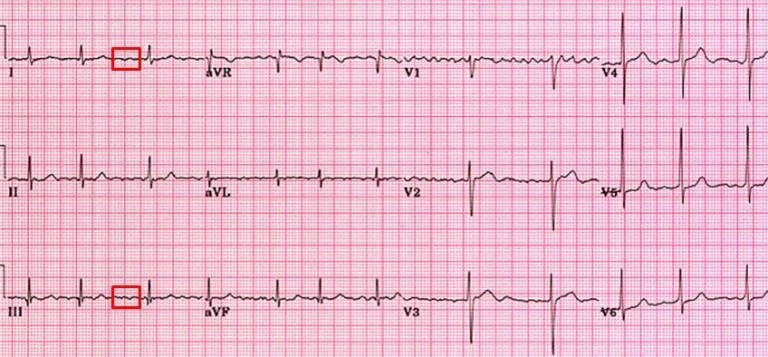Atrial fibrillation
Atrial fibrillation represents disorganized atrial activity without contraction or ejection. The electrocardiogram demonstrates an irregular baseline where the normal P waves are replaced with rapidly quivering small deflection of variable amplitude (f waves - outlined below). An irregularly irregular ventricular rate demonstrating narrow QRS complexes is established between 100 - 160 bpm. Atrial fibrillation is common in patients with rheumatic heart disease, pulmonary emboli, cardiomyopathy, pericarditis, ischemic heart disease and thyrotoxicosis. It causes minimal hemodynamic compromise and often the patient presents complaining of palpitations as the only symptom. Although hemodynamic compromise is minimal, atrial fibrillation is an important risk factor for the development of thromboembolic complications, such as strokes and transient ischemic attacks.
